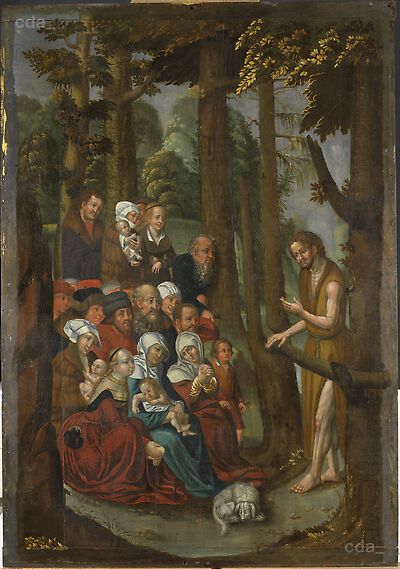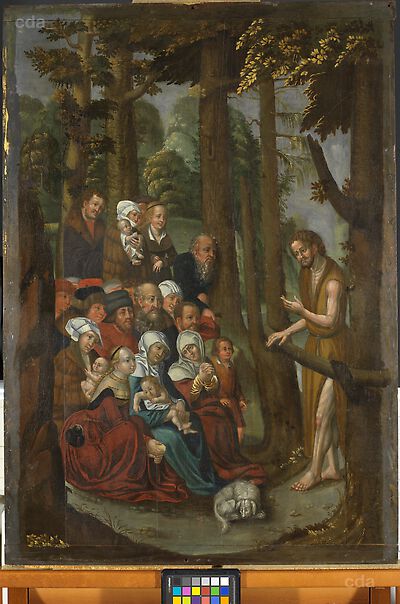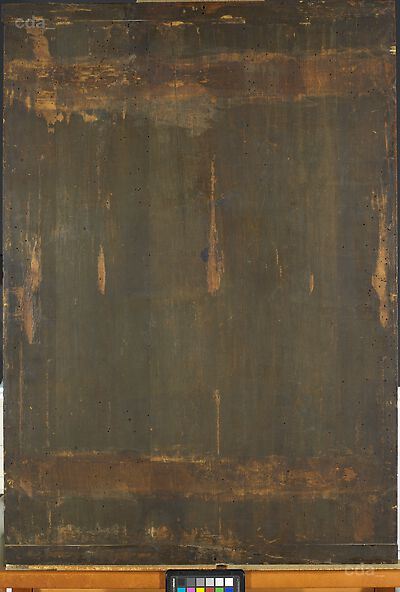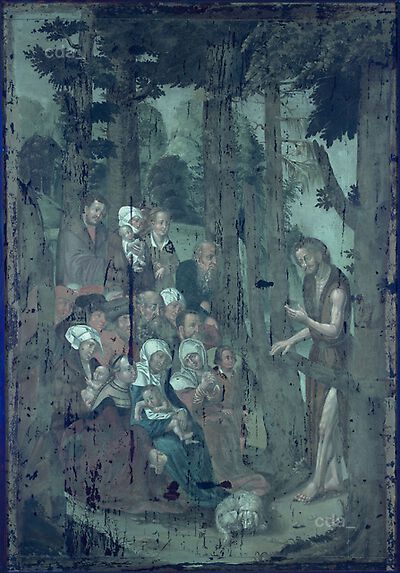Support
The wooden panel consists of five vertically aligned planks (from the top left c. 9/15/15.5/15/9.5 cm). The panel is fitted in an original grooved batten at the upper and lower edges. It appears to be a soft wood. The reverse has been carefully smoothed and stained dark brown. There are marks made by horizontal members that have since been removed transverse to the vertically aligned planks in the upper and lower third of the panel.
The wooden panel with its grooved battens exhibits a construction that has not been found on any other painting from the Cranach workshop.
Ground and Imprimatura
The ground is grey (clearly visible on the left anf right edge of the panel). A barbe is not present, the edges have not been trimmed.
As yet a grey ground has not been identified on any paintings from the Cranach workshop.
Underdrawing
No underdrawing was identified using infrared reflectography.
Due to the grey ground (high carbon content) the infrared reflectogram appears particularly dark.
Paint Layers and Gilding
Employing XRF analysis and Ultraviolet–visible spectroscopy the following pigments were identified when compared with optical characteristics:
- Calcium (chalk?), iron (iron oxide) and probably lead white contained within the ground
- lead white (in the lighter areas), azurite (in the sky), ultramarine (Lapislazuli, in the sky), vermilion (in the red areas of the painting), yellow ochre/ umber (in yellowish-brown areas), copper containing green pigment (in the green areas) as well as organic pigments that could not be identified
No lead-tin-yellow was identified.
The modelling of the faces was executed using various tonal admixutres of flesh paint and incorporated the grey ground.
The x-radiograph did not reveal any great alterations in the composition or another earlier coomposition.
The paint application on the upper and lower horizontal battens is original.
The identified pigments were used both in the Cranach workshop and generally north of the Alps in the 16th century and after. The admixture of ultramarine and azurite in the sky and the lack of lead-tin-yellow in the yellow areas is unusual for a painting from the Cranach workshop. The technique and style employed for the execution of the faces, draperies and the foliage is in comparison with other paintings from the Cranach workshop very different.
[unpublished examination report, G. Heydenreich, 2018]





